Position-time graph for motion with zero acceleration is

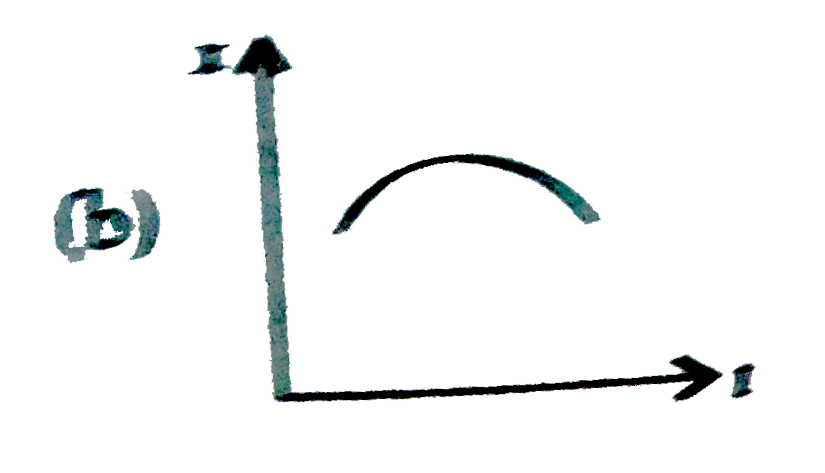
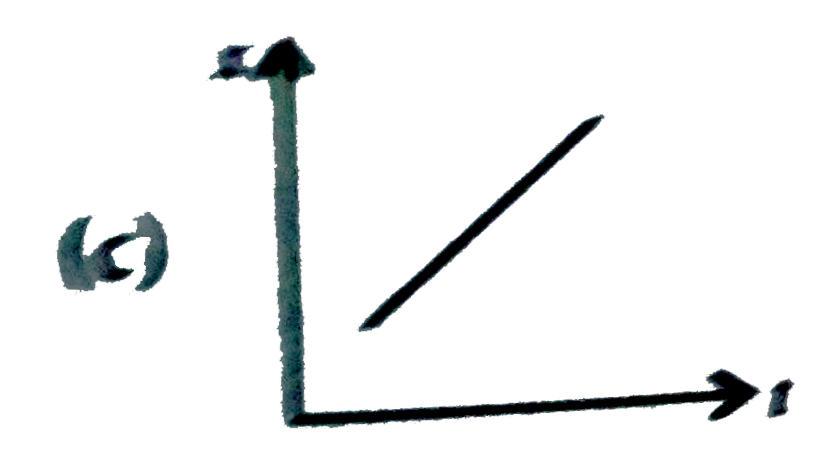
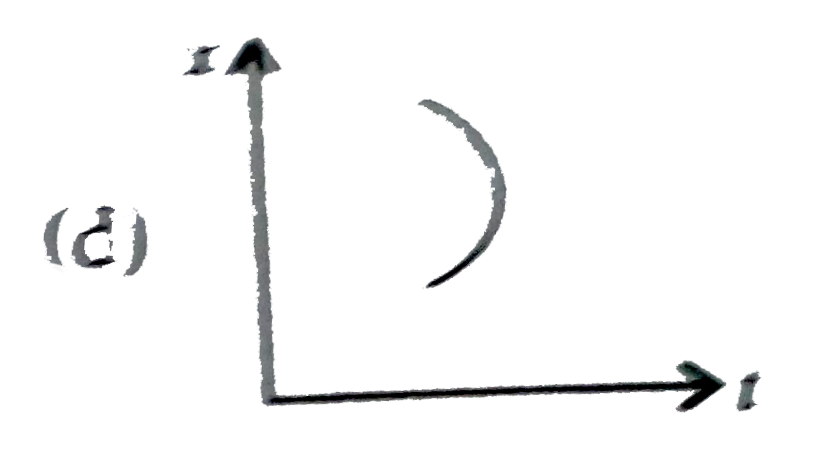
The correct Answer is:C
To solve the question regarding the position-time graph for motion with zero acceleration, we can follow these steps:
1. Understanding Zero Acceleration:
- Zero acceleration means that the velocity of the object is constant. There is no change in velocity over time.
2. Position-Time Graph Basics:
- A position-time graph plots the position (x) of an object on the y-axis against time (t) on the x-axis.
3. Constant Velocity Implication:
- When the velocity is constant, the position of the object changes uniformly over time. This means that for equal intervals of time, the object covers equal distances.
4. Graph Representation:
- The graphical representation of constant velocity is a straight line. The slope of this line represents the velocity of the object.
5. Slope and Acceleration:
- The slope of the position-time graph is given by the formula dxdt, which represents velocity. Since the slope is constant (a straight line), the acceleration, which is the rate of change of velocity, is zero.
6. Conclusion:
- Therefore, the position-time graph for motion with zero acceleration is a straight line. This indicates that the object is moving with a constant velocity.
Final Answer:
The position-time graph for motion with zero acceleration is a straight line.
---
- Zero acceleration means that the velocity of the object is constant. There is no change in velocity over time.
- A position-time graph plots the position (x) of an object on the y-axis against time (t) on the x-axis.
- When the velocity is constant, the position of the object changes uniformly over time. This means that for equal intervals of time, the object covers equal distances.
- The graphical representation of constant velocity is a straight line. The slope of this line represents the velocity of the object.
- The slope of the position-time graph is given by the formula dxdt, which represents velocity. Since the slope is constant (a straight line), the acceleration, which is the rate of change of velocity, is zero.
- Therefore, the position-time graph for motion with zero acceleration is a straight line. This indicates that the object is moving with a constant velocity.
The position-time graph for motion with zero acceleration is a straight line.
Topper's Solved these Questions
- BOOK - NCERT FINGERTIPSCHAPTER - MOTION IN A STRAIGHT LINEEXERCISE - Kinematic Equations For Uniformly Accelerated Motion32videos
MOTION IN A STRAIGHT LINE
- BOOK - NCERT FINGERTIPSCHAPTER - MOTION IN A STRAIGHT LINEEXERCISE - Relative Velocity18videos
MOTION IN A STRAIGHT LINE
- BOOK - NCERT FINGERTIPSCHAPTER - MOTION IN A STRAIGHT LINEEXERCISE - Instantaneous Velocity And Speed16videos
MOTION IN A STRAIGHT LINE
- BOOK - NCERT FINGERTIPSCHAPTER - MOTION IN A PLANE EXERCISE - Assertion And Reason15videos
MOTION IN A PLANE
- BOOK - NCERT FINGERTIPSCHAPTER - OSCILLATIONS EXERCISE - Assertion And Reason15videos
OSCILLATIONS
Similar Questions
Knowledge Check
- Question 1 - Select One
Position - time graph for motion with negative acceleration is
A B
B C
C D
D
- Question 2 - Select One
Assertion : The displacement-time graph of a body moving with uniform acceleration is a straight line.
Reason : The displacement is proportional to time for uniformly accelerated motion.AIf both assertion and reason are true and the reason is the correct explanation of the assertion.BIf both assertion and reason are true but reason is not the correct explanation of the assertion.CIf assertion is true but reason is false.DIf the assertion and reason both are false - Question 3 - Select One
STATEMENT - 1 : The slope on a position-time graph is representative of the acceleration of the object.
STATEMENT - 2 : A straight, diagonal line on a position-time graph is representative of an onject with a constant velocity.
STATEMENT - 3 : I an object is at rest, then the position-time graph must be a horizontal line located on the time-axis.AFFFBFTTCFTFDTTT
Draw the position-tie graph for uniformly accelerated motion. What does its slope give ?
View SolutionDraw the position-time graph of a moving object, moving with zero acceleration.
View SolutionGraphs are very useful to represent a physical situation. Various quantities can be easily represented on graphs and other quantites can be determined from the graph. For example the slope of velocity-time graph represents instantaneous acceleration. For a motion with constant acceleration slope of velocity-time graph is constant. If acceleration is changing with time, slope with change and thus velocity-time graph will be a non-linear curve. Further the area of velocity-time graph gives displacement.
For the given velocity-time graph the possibly correct acceleration-time relationship is
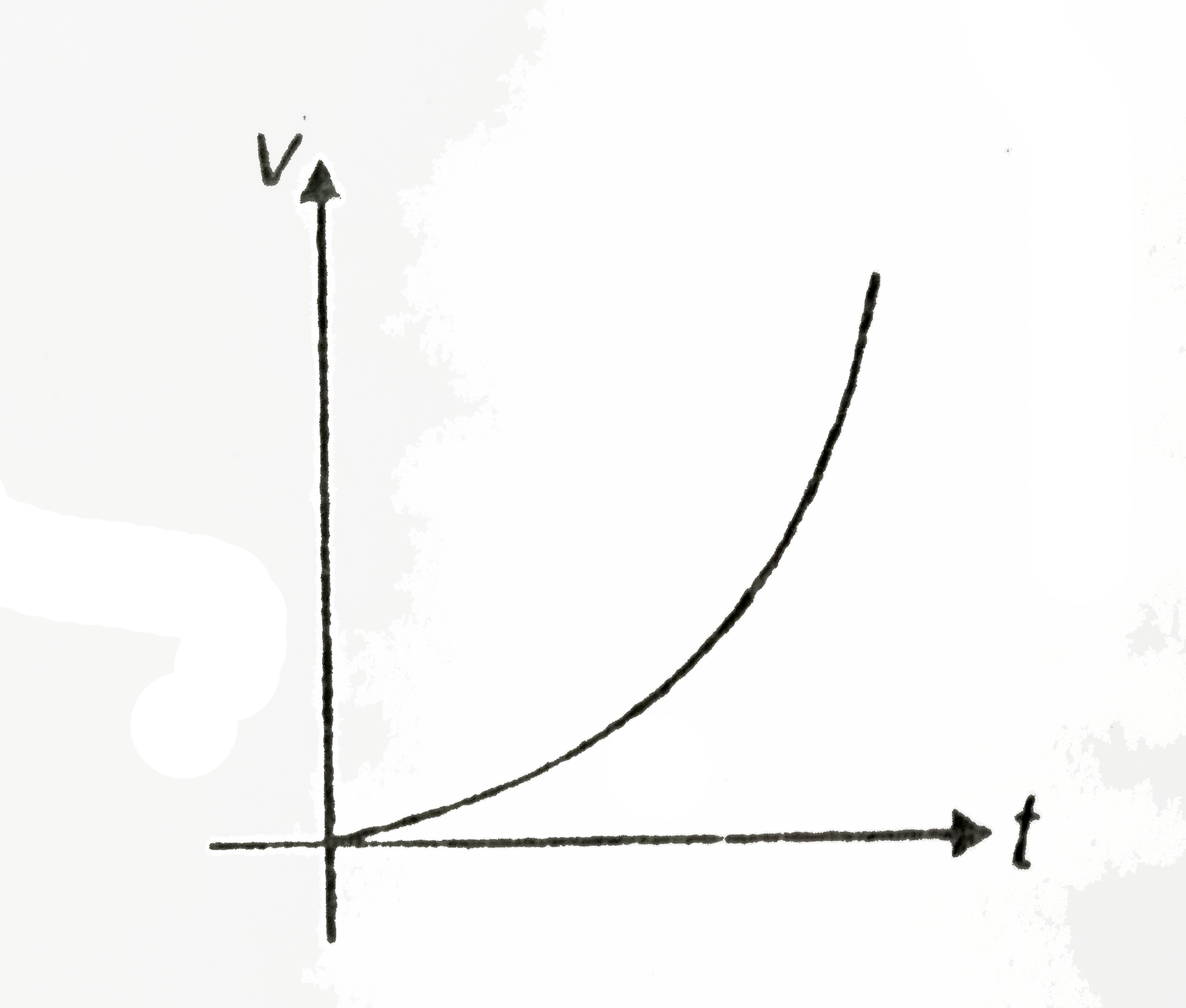 View Solution
View SolutionFor given velocity time graphs in which case the acceleration is uniform and positive -
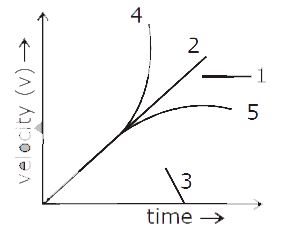 View Solution
View SolutionGraphs are very useful to represent a physical situation. Various quantities can be easily represented on graphs and other quantites can be determined from the graph. For example the slope of velocity-time graph represents instantaneous acceleration. For a motion with constant acceleration slope of velocity-time graph is constant. If acceleration is changing with time, slope with change and thus velocity-time graph will be a non-linear curve. Further the area of velocity-time graph gives displacement.
For the above situation let t1 be the time of accelerated motion and t2 be the time or retarded motion, then the correct relation isView Solution

